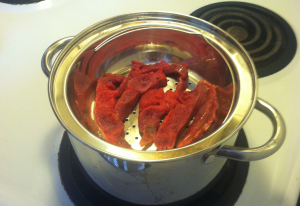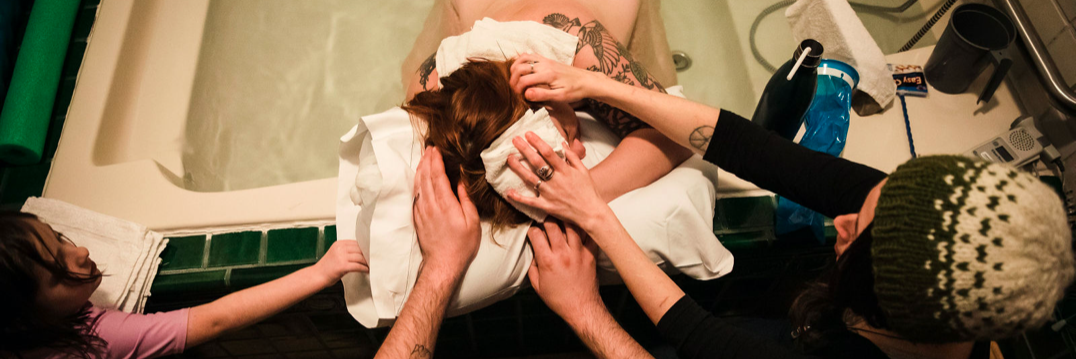In the West, placenta encapsulation is usually performed one of two ways. Either the placenta is sliced and dehydrated raw before grinding into a powder or done the “TCM” way. TCM stands for Traditional Chinese Medicine, and when used to describe placenta preparation, this often means your doula will steam the placenta with lemon, fresh ginger and spicy peppers. The remainder of the process stays the same: powdered placenta is stuffed into capsules for the ingestion of the postpartum mother. Parents frequently ask if I recommend one method of preparation over another. While I do prepare placentas for folks who prefer raw, I tend to stick with the encouragement of cooked foods and warm herbs postpartum.

As Jasper Moon at Turning Tides Midwifery blogs, “Traditional Chinese Medicine” preparation of a placenta is anything but traditional. The common recipe for preparing placenta the “TCM way” involves using warming elements, such as lemon, ginger, and hot peppers while steaming the placenta. This recipe was popularized by the Midwives Alliance North America conference in 1984, when Raven Lang presented it. Lang is a self-taught direct-entry midwife from California, pioneer in the midwifery movement in the United States and Traditional Chinese Medicine practitioner.
In TCM, postpartum is considered a very yin or cold time, and steaming the placenta before ingestion with warming herbs fits within that idea to facilitate warmth. This is what qualifies steamed placenta preparation as “traditional.” Jalapeños and lemons are very commonly accessible to midwives and doulas in the West, but I can’t think of an herbalist who considers lemons warming. The placenta has been considered medicinal for purposes in Chinese materia medica, but encapsulation postpartum goes back about thirty years in the U.S.
I wonder why, with few “strict” historical interpretations of placenta preparation postpartum, so many encapsulation specialists stick with the same herbs for steaming. As an herbalist, using “nontraditional” herbs for “Traditional Chinese Medicine” placenta preparation is interesting to me. With knowledge of our particular client’s concerns, we can be empowered to make more educated choices about our use of herbs.
This June, I prepared chocolate placenta truffles for a first time mom. While raw honey, coconut oil, and dried cherries appealed to mom, I chose to steam her placenta with cloves, cinnamon, nutmeg and ginger. These are all herbs that are considered warming, gently stimulating and are pleasantly fragrant to work with.

